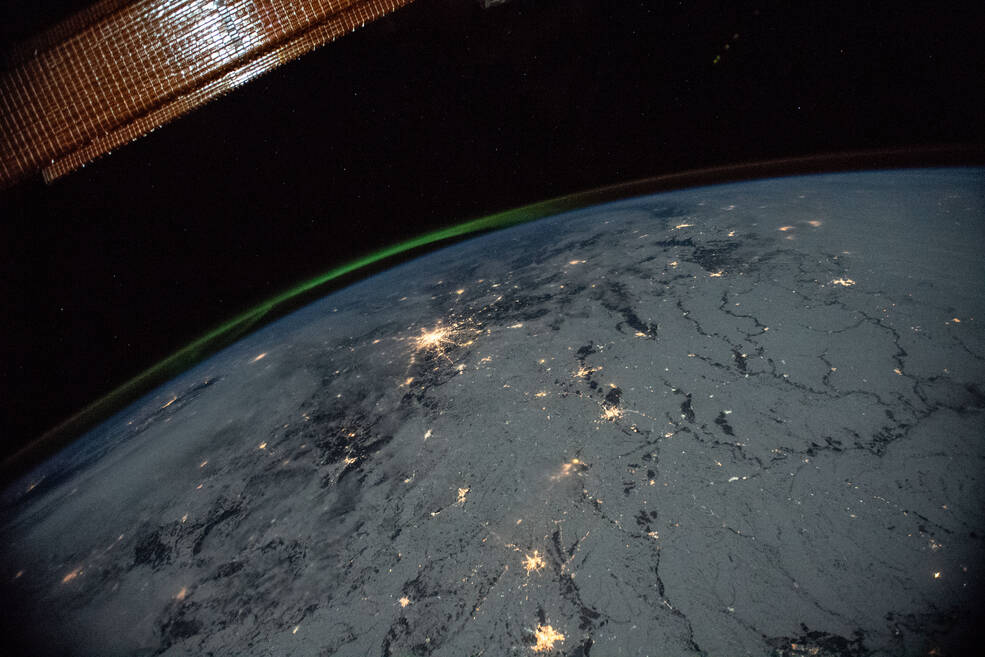NASA Pilot Attracts, Awards New Small Business Innovators
A lower barrier to entry. A streamlined review and selection process. Accelerated technology development and awards. These are just a few of the concepts that NASA is testing out with SBIR Ignite, a pilot initiative for small businesses, startups, and entrepreneurs that recently made its first Phase II awards.
Housed under NASA’s Small Business Innovation Research (SBIR) and Small Business Technology Transfer (STTR) program, SBIR Ignite aims to increase participation from product-driven companies that are not looking at NASA as their primary customer. Differentiating it from the program’s mainline solicitations that focus on technologies with potential for both infusion in NASA missions and commercialization in the marketplace, the SBIR Ignite solicitation is less prescriptive and contains only a select few topics that are relevant to emerging commercial markets in aerospace. The initiative provides funding and other support to de-risk technologies that have a strong commercial pull, helping make them more attractive to investors, customers, and partners, and fulfilling a goal of SBIR to increase private sector commercialization of innovations derived from federal research and development.
SBIR Ignite made its inaugural Phase I awards in 2022, selecting 12 small businesses to receive funding for their early-stage, high-risk technology concepts in climate resilience, solar arrays, recycling, and more, that could be commercialized for use in space and here on Earth. Following successful Phase I periods, all 12 small businesses were selected in June to receive Phase II awards and will each receive up to $850,000 to create their prototypes.
The awarded companies, their locations, and their project titles are:
- Ampaire Inc., Hawthorne, California: High Efficiency Powertrain for Hybrid Aircraft
- Canopy Aerospace Inc., Chicago: Reusable Heatshields through Additive Manufacturing
- Cecilia Energy, Brooklyn, New York: Catalytic Conversion of Waste Plastic to Hydrogen
- Crystal Sonic, Inc., Phoenix: Reducing Cost of Space Photovoltaics via Sound-Assisted Substrate Reuse
- H3X Technologies Inc., Lakewood, Colorado: HPDM-30 – A 10 kW/kg Integrated Motor Drive for UAV and Aircraft Electric Propulsion
- Outpost Technologies Corporation, Santa Monica, California: Outpost Cargo Ferry: A Rapid Cargo Downmass Vehicle
- re:3D, Inc., Houston: On-Orbit Additive Manufacturing Using Recycled Waste
- Solestial, Inc., Tempe, Arizona: Next Generation Silicon Based Solar Arrays for Space Stations and Other Permanent Space Infrastructure
- StormImpact Inc., Dublin, Ohio: Optimizing vegetation management to improve the resilience of the electrical power system to extreme weather
- Terrafuse, Inc., Pleasanton, California: Wildfire Mitigation through Explainable Risk Predictions
- Trans Astronautica Corporation, Los Angeles: Mini Bee Capture Bag for Active Debris Remediation
- Turion Space Corp., Irvine, California: Low-Cost CubeSat for Active Removal of Sizable Space Debris Utilizing a Mothership Architecture
“We are proud that all 12 of the small businesses are continuing with our program and persevering through the tough realities of early-stage research and development,” said Jason L. Kessler, program executive for the NASA SBIR/STTR program at the agency’s headquarters in Washington. “These awards foster a unique range of technologies that we hope will have positive impacts on the lives of everyday Americans in the future.”
For example, Terrafuse AI, a woman-founded company based in California, is using NASA Earth science data to build a climate risk model that will help insurance companies better assess the risk of climate-related damage to homes. The model uses troves of Earth observation data and machine learning to identify and quantify the risk of climate-related hazards, such as flooding, wildfires, and extreme weather events. This information would allow insurance companies to make more informed decisions about underwriting homes in high-risk areas, and to offer more accurate, lower cost premiums while also potentially enabling insurance products in areas which were once deemed uninsurable.
SBIR Ignite uses new ways to connect with innovators, designed to attract and award companies that are new to working with SBIR and NASA. For example, the Catalyst program is designed to help founders and entrepreneurs strengthen their opportunity for SBIR Ignite funding through initiatives like the Space Startup Ecosystem Digital Community and unique networking events. During the pilot’s first year, 75% of awardees had never received a NASA SBIR award when they started their Phase I projects.
“Bringing new entrepreneurs and ideas into NASA is focal point for our program, and we’re excited that SBIR Ignite has been able to serve as a testing ground for us to appeal to small businesses in new ways,” said Dr. Quenton Bonds, entrepreneurial engagement lead for NASA’s SBIR/STTR program at the agency’s Goddard Space Flight Center in Greenbelt, Maryland. “We’re optimistic that the experiments we’re running through SBIR Ignite will provide insights that will improve the impact of the whole SBIR/STTR program.”
The 2023 SBIR Ignite Phase I solicitation opened on Aug. 1, 2023; all proposals must be submitted by 5 p.m. EDT on Sept. 21, 2023.
The NASA SBIR/STTR program is part of NASA’s Space Technology Mission Directorate and is managed by NASA’s Ames Research Center in Silicon Valley. To learn more about NASA’s SBIR/STTR program and apply to future opportunities, visit:



























